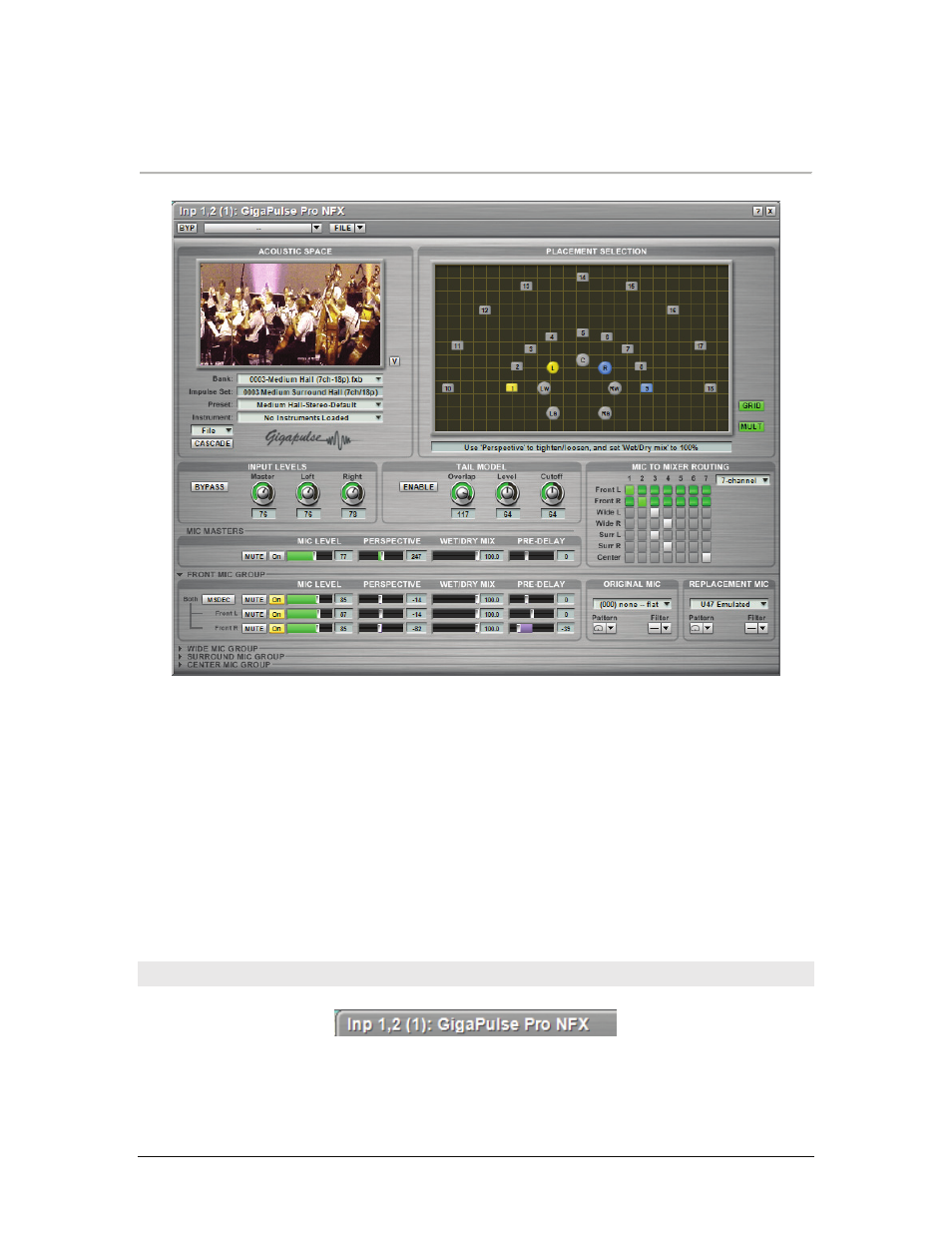Chapter 10: gigapulse, Title bar – Teac GigaStudio 4 User Manual
Page 151

GigaStudio 4 Reference Manual
151
CHAPTER 10: GIGAPULSE
GigaPulse employs convolution processing to create incredibly realistic reverb, mic modeling and
instrument resonance simulation. Convolution uses an actual recording as the basis for signal processing,
essentially sampling the sound of a room. For example, the sound of a concert hall is recorded with a set of
unique tones. This “impulse” recording can then be imported into GigaPulse Pro for processing.
An impulse can also be included/encoded into a sampled instrument or .gig file. When this instrument is
loaded into GigaStudio, the FX light will illuminate on the MIDI Mixer channel, and you can bypass the effect
by clicking on this button. The pulldown menu will open the GigaPulse SP interface for parameter editing.
The result sounds like you’re playing in that hall. GigaPulse Pro can also be used as a stand-alone NFX plug-
in on your own sample libraries. Use the new piano resonance model included with GigaPiano II on your
favorite piano library, or use GigaPulse’s surround reverb on your GigaStudio instruments.
All the elements of the GigaPulse interface are described in detail in this section.
Title Bar
The title bar of the GigaPulse window shows the channel pair of the insert or aux buss assignment and the
instance of the interface that is being used. It is possible to have as many instances of GigaPulse as your system
resources will allow.